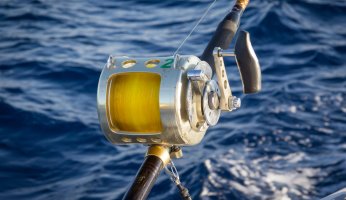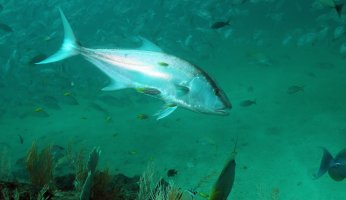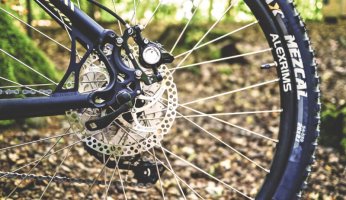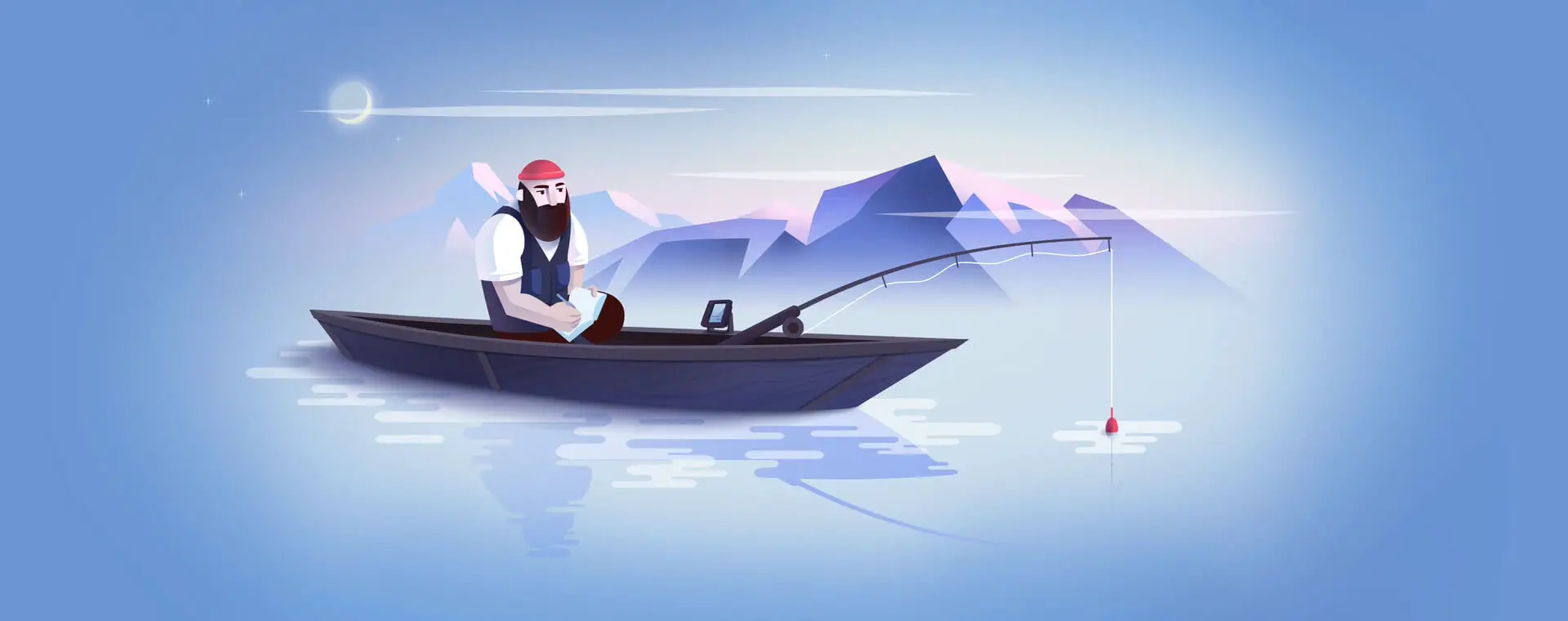Is A Kayak Or Canoe Better For Fishing?
 Is A Kayak Or Canoe Better For Fishing?
gearweare.net
Is A Kayak Or Canoe Better For Fishing?
gearweare.net
Is a kayak or canoe better for fishing? Kayaking is trending as more popular, but personal preference based is the final determinate.
When you want to enjoy a pleasant day fishing on the water, should you choose a canoe or a kayak?
Either makes for convenient transport on a lake or river, but fishermen are quite opinionated about which is more convenient.
Both canoes and kayaks are small recreational boats that users sit in as they paddle through the water with an oar. While canoers use an oar with a paddle on one end, a kayak oar has paddles on both sides.
For fishing, a sportsman can sit or stand in either.
Although they are alike enough that some cultures consider a kayak a type of canoe, canoes, and kayaks have so many differences in design, stability, maneuverability, and capacity that they are rightly viewed as discrete types of vessels.
Table of Contents
- Design Differences Between Canoes And Kayaks
- Which Is Easiest To Get In And Out Of?
- Which Is More Comfortable To Sit In While Fishing?
- Which Is Easier For A Beginner To Learn?
- Which Has More Capacity?
- Which Is Easiest To Maneuver?
- Which Is More Stable – A Kayak Or Canoe?
- How Easy Is It To Transport A Canoe Vs. A Kayak?
- How Do You Carry Fishing Gear?
- Do Water Conditions Matter?
- Canoe Vs Kayak Fishing: Which Is Better – The Verdict
Design Differences Between Canoes and Kayaks
Kayak Design
The kayak was originally designed 4,000 years ago by the Inuit, Yup’ik, and Aleut peoples for hunting and fishing in the Arctic Ocean, North Atlantic, Bering Sea, North Pacific oceans, and local inland lakes and inland rivers.
Early kayaks were made of animal skins stretched over wood or whalebone skeleton frames. The specific design varied among people, but the measurements were personalized to the user, with the length about three times the span of his outstretched arms and the width equal to his hips plus two fists; the typical dimension was 17 ft. (5.2 m) long by 20–22 in (51–56 cm) wide by 7 in (18 cm) deep.
Modern kayaks are available in multiple sizes, but the length, width, and curvature affect their stability, maneuverability, and speed. They are now made of wood, fiberglass, or polyethylene resins or may be inflatable.
Since 1997, some kayaks have foot pedals that allow a fisherman to hold, cast, and retrieve the fishing rod.
Kayaks offer a choice of traditional sit-in models and sit-on-top models that the user can even stand on.
Canoe Design
In use since at least 8200 BC, canoes have been used by people throughout the world for transport, trade, hunting, and fishing. The canoe style varied according to purpose and location, but early canoes were often made of bark, which may have been covered with animal skins.
As they exceeded 35′ in length, they were sometimes used to transport others.
Modern canoes use variations of age-old techniques to develop wand-and-canvas models that cover planks and ribs bend over a mold with a waterproof canvas shell.
As canoes are used for many recreational purposes, the requirements for carrying capacity, maneuverability, stability, and speed determine the hull’s length, width, profile, and curvature.
Both the origins of the canoe and the kayak and their evolution in design are similar. Still, modern iterations of these watercraft are different enough that a user in need of a good fishing boat can find answers to questions they may have.
Which Is Easiest To Get In And Out Of?
Canoes have an open-top design, making getting in and out of this type of vessel easier as passengers can steady themselves on the canoe’s sides or a nearby dock as they step in or out.
As many kayaks have closed-design tops, getting in and out is more of a balancing act.
Sit-on-top kayaks are easy to mount, as the seat is readily accessible.
Which Is More Comfortable To Sit In While Fishing?
In a kayak, the operator sits with legs outstretched inside the boat so that they literally wear the kayak.
In contrast to the more closed-in feel of a kayak, occupants of a canoe sit on a bench and have better freedom of movement as the top is open. However, the snug fit of a kayak lets owners feel more in control of their vessel, and most find paddling easier.
The ride will be comfortable if the cockpit seat is configured with back support, even for an extended day trip.
Many kayakers love the sit-on-top models, but beginners might feel more secure in a sit-in model.
Which Is Easier For a Beginner To Learn?
Both canoes and kayaks move through the water with a paddle, but a kayak has a 2-sided oar that one person uses, while a canoe uses 2 paddles with a single paddle blade on one end and a knob on the other that requires 2 paddlers who alternate strokes to keep the boat on course.
Learning the paddle motion of a kayak is easier to do than paddling a canoe.
Which Has More Capacity?
Canoes are usually bigger than kayaks, have a larger storage space and can accommodate more weight from passengers, gear, coolers, and pets.
If you plan to fish with your buddies or take Fido out for the day, a canoe is the better choice. The sides and upper edges of the boat (the gunnels or gunwales, which are both pronounced the same way) help keep the occupants inside.
Some paddlers put their small dog between their legs as they steer a one-person kayak; having a tandem or 2-seated kayak can accommodate a passenger and a larger dog or more gear.
Which Is Easiest To Maneuver?
Kayaks are narrower and have a bow and stern that curves upward (a rocker design), which means less hull in the water, a lower center of gravity, and less resistance when paddling. A paddler can keep the kayak straight with rudders and skegs to assist steering and double-sided paddles for better control.
Once canoers master the skill of paddling, canoes are easy to manage.
Which Is More Stable – A Kayak Or Canoe?
While kayaks are easier to maneuver, canoes are more stable as they have wider hulls that allow occupants to move about the boat without fear of tipping over.
However, even modern kayaks are difficult to capsize.
How Easy is it To Transport a Canoe vs. A Kayak?
Kayaks are light enough to transport to the lake in a truck or on a car roof, but more challenging to get the final distance to the water.
Canoes are harder to carry on a vehicle but are more easily carried by hand to the dock by a couple of people.
How Do You Carry Fishing Gear?
Both traditional and stand-up kayaks can be retrofitted with after-market fishing accessories such as rod holders, anchor trolleys, electronic fish-finders, and live-bait containers. What is not mounted on the boat can be stored under the cockpit or tandem kayak seats to be waterproof.
Canoers often pack gear in plastic bags or dry bags and then tie it down. Paddles and fishing rods are also secured with bungee cords.
While canoe passengers stay dryer than kayakers, the gear is at risk of getting wet as it is exposed.
Do Water Conditions Matter?
In calm waters, both kayaks and canoes will be easy to steer and fare well in keeping upright without getting the occupants wet.
A canoe offers more protection as the sides are higher. Using a “spray skirt,” a rubber or fabric apron that fits over the cockpit, will keep kayakers fairly dry, while a bilge pump will remove excess water. Even gear fares better with a kayak.
In rougher waters, a kayak has distinct advantages. Owners who plan on deep-sea fishing and adventure trips like whitewater rafting or ocean paddling will fare better in a more maneuverable kayak – especially if they prepare themselves by learning techniques such as the “Eskimo roll” to the right a tipped kayak.
A canoe that tips over in a similar situation can’t easily be righted.
Canoe Vs Kayak Fishing: Which Is Better – The Verdict
Is a kayak or canoe better for fishing?
Kayaking is trending as more popular, but personal preference based on the questions above is the final determinate.













